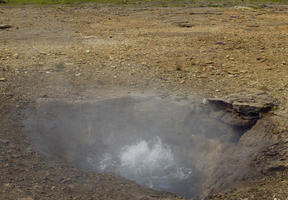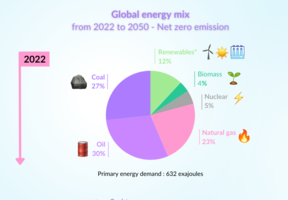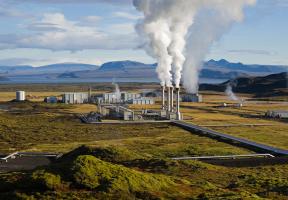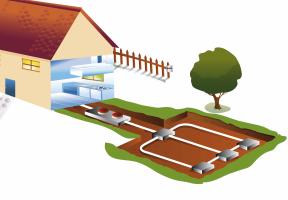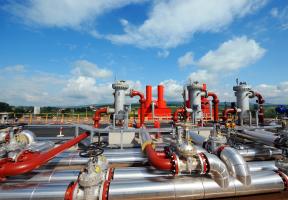Kenya: Betting on Geothermal and Renewable Energies
10 min read
A country situated at the crossroads of East Africa, Kenya has considerably expanded its services sector, in particular making huge progress in the field of digitalization and mobile telecommunications. Although more than one-third of its 46 million inhabitants still live below the poverty line, in recent years a middle class has emerged. This class is a key driver of domestic consumer spending, which contributes 75% of GDP growth1.

© ROBERTO SCHMIDT / AFP - The Olkaria geothermal plat in central Kenya extracts heat from some 2 km below the Earth's surface to generate electricity.
Like in most Sub-Saharan African countries, final energy consumption continues to be dominated by (71% in 2014), two-thirds of which is used for cooking and heating. The share of petroleum products, all of which are imported, is expanding rapidly (up from 16% of the in 2004 to 22% in 2014), due primarily to the growing number of vehicles on the road2. Although Kenya has discovered a few deposits along the border with Somalia, its oil and gas industry has not yet been developed, in contrast to the boom taking place elsewhere in Africa.
The weak spot is the country’s electrification rate: only 23% of the population has access to 3, according to the World Bank, and electricity accounts for less than 5% of the energy mix. The government has made improving the country’s electricity supply a priority, including it in its “Vision 2030” development program. Its objective is ambitious: to increase installed generation capacity from 2,200 megawatts to at least 15,000 megawatts.
Great Rift Valley Puts Geothermal at the Forefront
Kenya’s energy situation is unique. energy became the primary source of electric power in 2016 (44% in 2014), ahead of hydropower (36%) and thermal power (19%). Renewable energies account for 80% of the country’s .
Kenya first began capturing the heat energy of the Earth in the 1980s when plant I of the Olkaria geothermal power station was built in Naivasha, 120 kilometers northwest of Nairobi. The power station has since added three more plants. Two are operated by the Kenya Electricity Generating Company (KenGen), and one is owned by the U.S.-Israeli firm Ormat. With a total of nearly 550 megawatts, Olkaria has become one of the largest geothermal power stations in the world, with operations spanning an area of 240 square kilometers. Heat is recovered from wells two kilometers below the surface. Plants V and VI are slated for construction by 2019.
Kenya, as well as a large chunk of East Africa, is situated on a gigantic fracture in the Earth’s surface, the Great Rift Valley, that stretches more than 6,000 kilometers all the way to southern Africa. This rift is the site of major geothermal heat flows that have the potential to produce an estimated 20,000 megawatts of power, 7,000 megawatts of which in Kenya. The United Nations and various multilateral development banks are promoting the development of geothermal energy across the entire East African region. Projects are planned – but not yet completed – in Ethiopia, Tanzania and Djibouti.
Geothermal energy offers a number of advantages. One immediate use – supplying heat to greenhouses – helps to increase agricultural production. Geothermal is also cheaper: in Kenya, one kilowatt-hour of geothermal energy costs $0.07, compared to $0.18 for oil‑generated power. It emits no pollutants or CO2, and because it’s available all the time, it is less erratic than wind or sun power.
A Focus on Renewables and Nuclear Energy
Geothermal energy arrived just in time to take over from hydropower, which saw its share of the electricity mix fall from 53% in 2004 to 36% ten years later. Owing to increasing drought conditions and a decline in reservoir levels, hydropower availability in Kenya has dropped below 60%, while the Olkaria geothermal station achieved an availability factor of close to 95%.
Under the government’s “Vision 2030” program, renewables will continue to play a prominent role. It calls for a nine-fold increase in geothermal installed capacity to 5,000 megawatts. , a low-carbon power source, as well as wind and solar energy, will also be the object of extensive development.
A large wind farm is being built near Lake Turkana, 500 kilometers north of Nairobi, at the center of a powerful jet stream originating in the Indian Ocean known as the Turkana Corridor. The farm is expected to deliver 310 megawatts of wind power by summer 2017.
In addition to developing power generation, the project will see an expansion of high-voltage networks. The East-African sub-region is a leader in regional integration, as can be seen by its cross-border electricity system. Kenya has signed power exchange agreements with Rwanda, Uganda and Tanzania.
In the field of solar power, Kenya, like many other African countries, would like to supplement its centralized grids with decentralized, village-scale energy systems. Companies that are involved in these initiatives benefit from Kenya’s highly developed mobile telecommunications sector and its micro-payment applications. M-Kopa Solar, for example, offers a solar kit that includes a capable of powering three lights and a phone charger. Customers pay €0.33 a day directly from their mobile phones to make the devices work.
Sources :
- World Bank – Economic data
- World vehicle statistics - The International Organization of Motor Vehicules Manufacturers
- Access to electricity in the world


